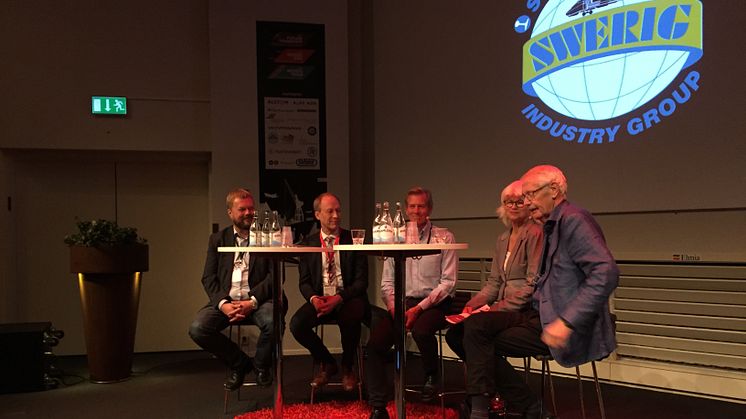
News -
The high-speed line – a good start to many problems
Is building a high-speed rail line in Sweden the solution to every problem? That somewhat pointed question was discussed at the key seminar “High-speed railways – do they solve the problems?” The panel’s answer? They don’t solve everything but they help a lot.
Homes, workplaces and expanded public transport – many hopes are resting on a future high-speed rail line in Sweden. But the question is, can it solve all of them?
When the question was discussed at Tuesday’s key seminar, HG Wessberg from Sweden’s National Negotiation on Housing and Infrastructure listed many issues it does not solve – for example, the Iron Ore Line in the far north, services between Gävle and Sundsvall, and a lot of goods train issues in the far north.
“What it does do is that it takes a first really serious step to improve the general lack of capacity on our Swedish railways,” he said during the discussion.
A high-speed rail line also takes the load off the old trunk line and also gives the Swedish Transport Administrationbetter conditions for improving the latter. Wessberg also stressed that the new trunk line will bind Sweden more closely together.
“All of the south of Sweden will be one common workplace region. It will be totally possible for a family to live in Jönköping, with one of the couple working in Gothenburg and the other in Stockholm. It will be easier for companies to hire and people can more easily find jobs. We will also really be able to deal with the climate problem for the first time. This is the only way we can help to reach the climate goals we have established, and in principle to out-compete air travel between Stockholm and Gothenburg and between Stockholm and Malmö.”
But a high-speed rail line does not have to be the solution to every problem. The Oslo–Stockholm 2.55 project shows that it is possible to do a lot with far smaller measures than building totally new rail lines. Jonas Karlsson is CEO of the company behind the project. He sees a tendency for the high-speed rail debate to swallow up all other problems. For example, a rail journey between Oslo and Stockholm currently takes about five hours. To do it in under three hours – with conventional trains – would mean an incredible amount for the region’s labour market.
The planned cost of the project is SEK 55 billion (EUR 5.7 billion) – money that does not exist today. One way to fund the rail link is to see if the socio-economic gains can be transformed into revenue.
“We’ve come so far that we must now find other financing solutions. Debt financing is hot but we don’t believe the key is there – instead it is on the income side,” Karlsson says.